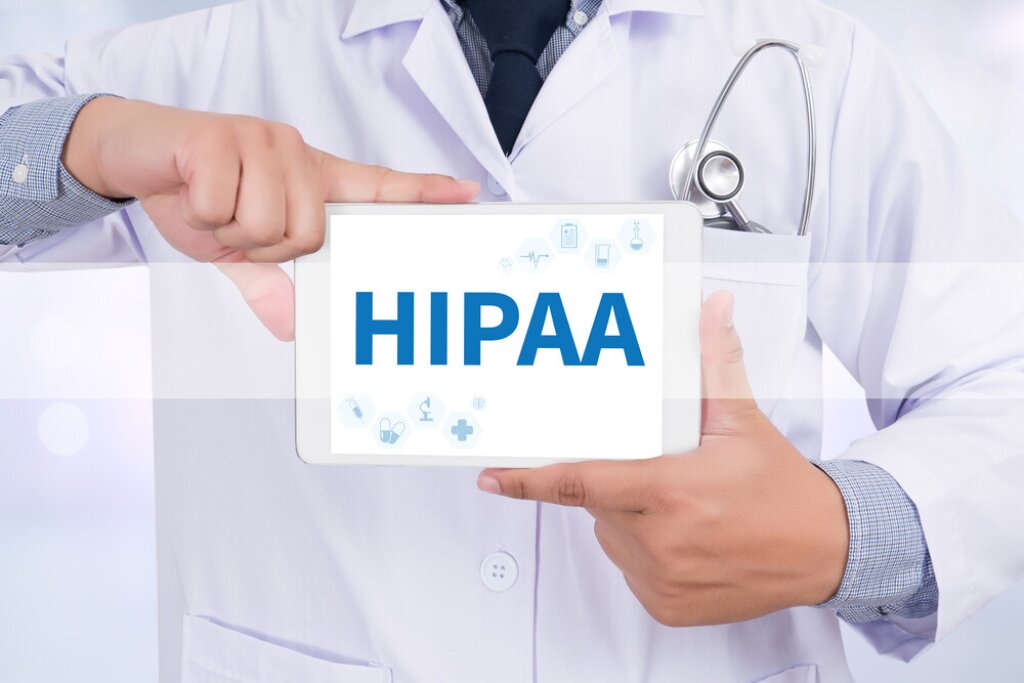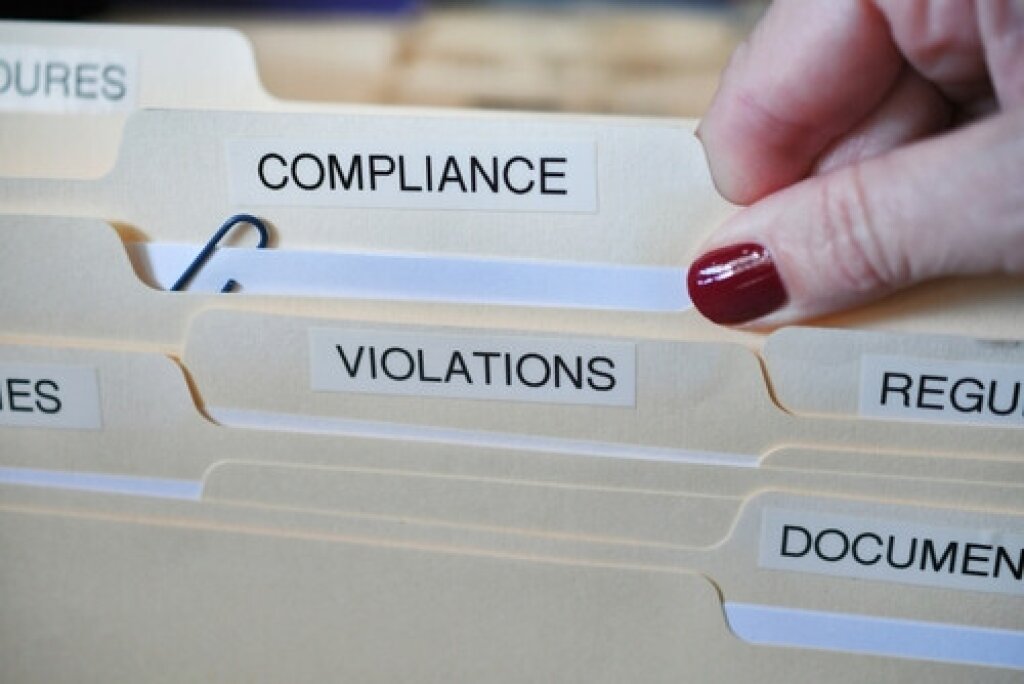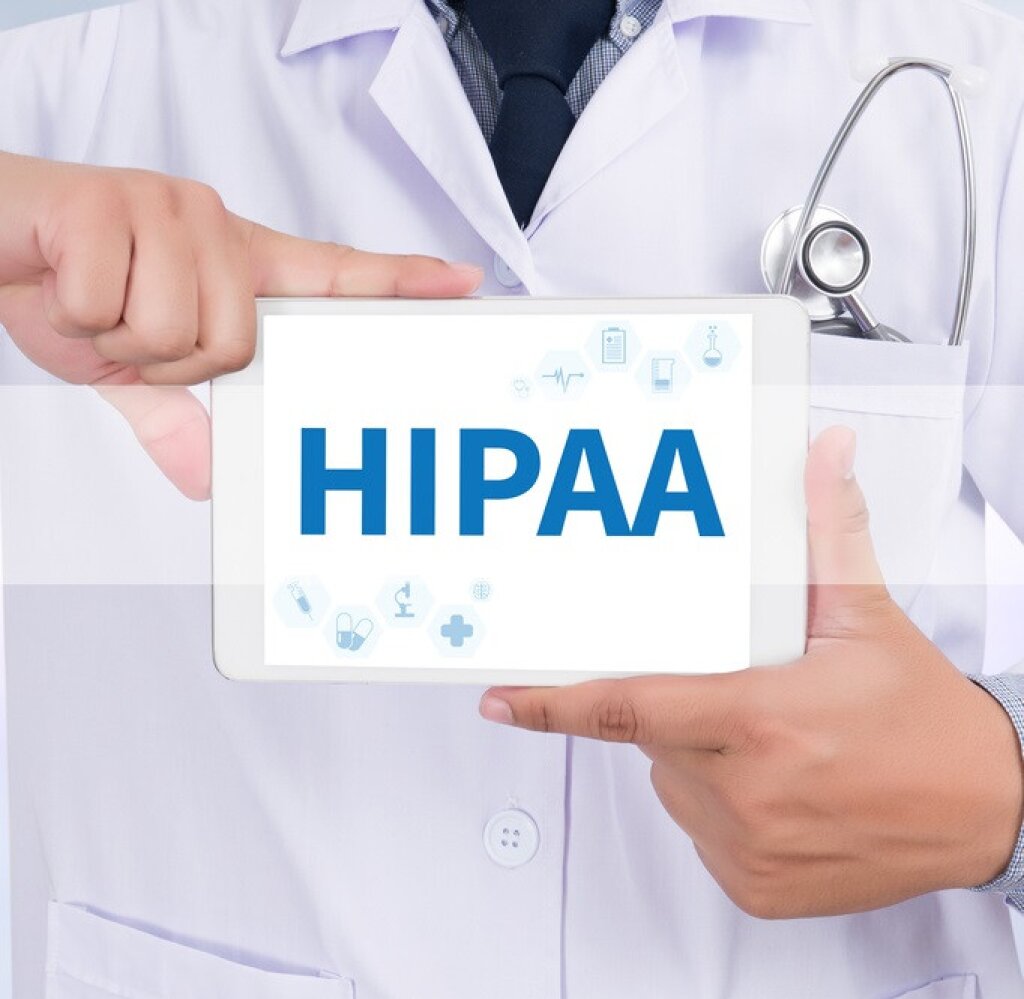What is HIPAA Compliance? Rules & Regulations
Discover the essentials of HIPAA compliance, including its rules, requirements, common violations and the latest updates. Learn how to protect sensitive healthcare data effectively with our comprehensive HIPAA compliance checklist.
What is HIPAA Compliance?
HIPAA compliance refers to the adherence to the Health Insurance Portability and Accountability Act (HIPAA) of 1996, which establishes national standards to protect sensitive patient health information. HIPAA compliance ensures that organizations handling such data do so securely and in accordance with federal regulations.

HIPAA Compliance Definition
HIPAA compliance involves implementing measures to safeguard Protected Health Information (PHI) through privacy and security practices.
Organizations must meet specific requirements outlined in HIPAA’s rules, including the Privacy Rule, Security Rule and Breach Notification Rule.
The Need for HIPAA Compliance
The U.S. Department of Health and Human Service (HHS) points out that as health care providers and other entities dealing with PHI move to computerized and digital operations, including computerized physician order entry (CPOE) systems, electronic health records (EHR), and radiology, pharmacy and laboratory systems, HIPAA compliance is more important than ever.
In addition, health plans provide access to claims as well as care management and self-service applications. Of course, electronic methods provide increased efficiency and mobility, however they also increase security risks posed to healthcare data.
HIPAA compliance rules are in place to protect the privacy of individuals’ health information. HIPAA rules simultaneously enable covered entities to implement new technologies to improve the efficiency of patient care.
What is Protected Health Information (PHI)?
PHI refers to any information in a medical context that can identify an individual. PHI includes details such as:
Names
Social Security Numbers
Medical Records
Billing Information
Email Addresses
Fingerprints
Facial Images
Vehicle Identifiers
Who Needs to Be HIPAA Compliant?
HIPAA compliance is mandatory for:
Covered Entities
Healthcare providers, health plans and healthcare clearinghouses.
Business Associates
Organizations or individuals working with covered entities who handle PHI, such as IT providers and billing services.
What are the HIPAA Rules and Regulations?
HIPPA includes several key rules designed to safeguard Protected Health Information (PHI).
1. HIPAA Privacy Rule
The Privacy Rule sets national standards to protect individuals' medical records and other PHI. It applies to covered entities such as healthcare providers, health plans and healthcare clearinghouses, as well as their business associates.
Key Provisions: Patient Rights
Right to access and obtain copies of their PHI.
Right to request amendments to their records.
Right to receive an accounting of disclosures.
Use and Disclosure:
PHI can only be used or disclosed for treatment, payment and healthcare operations without patient authorization.
Disclosure is allowed in specific cases, such as public health reporting or law enforcement requirements.
Minimum Necessary Rule:
Covered entities must limit the use or disclosure of PHI to the minimum necessary for a specific purpose.
Penalties for HIPAA Non-Compliance:
Violations can result in civil fines ranging from $100 to $50,000 per violation, up to $1.5 million per year for repeated violations.
2. HIPAA Security Rule
The Security Rule focuses on safeguarding electronic Protected Health Information (ePHI). It mandates administrative, physical and technical safeguards to ensure the confidentiality, integrity and availability of ePHI.
Key Safeguards
Administrative Safeguards:
Conducting risk assessments to identify and address vulnerabilities.
Implementing security management processes.
Training employees on security policies and procedures.
Physical Safeguards
Restricting physical access to facilities and equipment housing ePHI.
Implementing workstation and device security protocols.
Technical Safeguards:
Using access controls, such as unique user IDs and encryption.
Implementing audit controls to monitor access to ePHI.
Ensuring secure transmission of ePHI over networks.
Compliance Requirements:
Covered entities must regularly review and update their security measures to adapt to new threats and technologies.
3. HIPAA Breach Notification Rule
The Breach Notification Rule outlines the requirements for covered entities and business associates to notify affected individuals, the Department of Health and Human Services (HHS), and in some cases, the media, of breaches involving unsecured PHI.
Key Requirements:
Definition of a Breach
Any unauthorized acquisition, access, use or disclosure of PHI that compromises its security or privacy.Notification Timelines
Affected individuals must be notified without unreasonable delay, and no later than 60 days after discovery.If a breach affects more than 500 individuals, the HHS and media must also be notified.
Content of Notification
A description of the breach, the types of PHI involved and steps individuals can take to protect themselves.Contact information for further assistance.
Exceptions
If PHI is encrypted or rendered unusable, unreadable or indecipherable to unauthorized individuals, the breach may not require notification.
Additional Rules
In addition to the three core rules, HIPAA includes:
HIPAA Enforcement Rule
Establishes procedures for investigations, penalties and compliance reviews.HIPAA Omnibus Rule
Extends HIPAA requirements to business associates and enhances enforcement mechanisms.
These rules collectively aim to protect individuals’ health information while ensuring that healthcare organizations can operate effectively in the digital age.

Physical and Technical Safeguards, Policies and HIPAA Compliance
To maintain HIPAA compliance, organizations must implement a combination of physical and technical safeguards and maintain detailed policies.
To ensure the security of PHI, physical and technical safeguards are required.
Physical HIPAA Safeguards
Facility Access Controls
Organizations should implement procedures to restrict access to facilities containing PHI, such as access control cards, surveillance cameras or biometric authentication.Workstation Use and Security
Workstations that handle PHI must be protected from unauthorized access and employees must follow guidelines on workstation use. Workstation monitors should be screened from public view.Device and Media Controls
Electronic media containing PHI must be strictly managed and controlled, including when and how they are disposed of.
Technical HIPAA Safeguards
Data Encryption
Encryption technologies should be implemented to protect against unauthorized access during transmission over networks or on stored devices.User Authentication
All users with access to PHI must have unique identification credentials to facilitate system traceability.Audit Controls
Organizations must implement mechanisms to record and interrogate activity on systems that handle PHI. Audits help to track user access and identify potential security or data breaches.
Are There Any Exceptions to the HIPAA Privacy Rule
HIPAA mandates national standards to protect sensitive patient health information from disclosure without patient knowledge or consent.
The HHS issued the HIPAA Privacy Rule to implement this mandate.
However, there are some exceptions. The Privacy Rule contains 12 such exceptions, whereby patient data can be shared with other parties without patient consent. The Privacy Rule exceptions include:
Victims of domestic violence or other assault.
Judicial and administrative proceedings.
Cadaveric organ, eye or tissue donation.
Workers’ compensation.
Complementary HIPAA Compliance Controls: Redaction
Many Guides to HIPAA compliance overlook an important control element, namely redaction.
Redaction is the act of obscuring, in this case the obscuring of personal data, in the form of blacked-out or removed data in documents, or the blurring of faces and other identifying objects in video footage.
A high percentage of HIPAA violations are not wilful. Plus, they frequently occur when data is shared with third parties, i.e., when documents or video footage leave a healthcare provider’s environment.
It is essential that no personal data other than that of the subject of interest is disclosed when sharing information.
It is therefore highly advisable to redact documents and video footage prior to sharing it with third parties.
What Are the Seven Elements of an Effective Compliance Program?
The Seven Elements
1. Written Policies and Procedures
2. Compliance Program Oversight
3. Training and Education
4. Effective Communication
5. Monitoring and Auditing
6. Disciplinary Guidelines
7. Prompt Response to Violations
What Are HIPAA Compliance Requirements?
HIPAA regulation outlines a set of national standards that all covered entities and business associates must address.
Self-Audits
HIPAA requires annual audits of an organization’s assets to assess administrative, technical and physical gaps in HIPAA compliance.Remediation Plans
Entities must implement remediation plans to fill any discovered compliance gaps and to reverse compliance violations.Policies, Procedures, Employee Training
Policies and procedures must be updated regularly to account for organizational changes, and annual staff training is required.Documentation
Organizations must document every effort made to become HIPAA compliant.Business Associate Management
Entities and associates must document vendors with whom PHI is shared, and execute agreements to ensure PHI is handled securely.Incident Management
Entities must have a process to document a data breach and notify patients that their data has been compromised.

HIPAA Compliance Violations
Types of HIPAA Violations
Unauthorized access to PHI
Failure to conduct risk assessments
Insufficient safeguards for data security
HIPAA Penalties
Penalties range from $100 to $50,000 per violation, with a maximum annual penalty of $1.5 million.
Real-World Examples of HIPAA Violations
Notable cases include breaches caused by unencrypted devices and improper disposal of records.
To gain further insight into how HIPAA violations occur and their consequences, here are three examples:
Anthem, Inc.
Anthem, Inc., a major health insurance provider, paid a settlement of more than $16 million following its failure to implement appropriate security measures, which led to unauthorized access by cybercriminals to nearly 79 million records in 2015.New York-Presbyterian Hospital/Columbia University Medical Center
A breach report revealed that an improperly deactivated server resulted in search engines being able to access PHI, which affected approximately 6,800 patients’ records and resulted in a settlement of $4.8 million in 2014.Memorial Healthcare System
In 2012, Memorial Healthcare System discovered that its employees had been accessing patient records without authorization for more than a year, which involved more than 115,000 patients and led to a $5.5 million settlement.
Common causes of HIPAA violations include:
Stolen laptop
Stolen phone
Stolen USB device
Business associate breach
Office break-in
Sending PHI to the wrong patient or contact
Discussing PHI outside of the office
Social media posts
Recent HIPAA Updates
Information Blocking Rule
The blocking rule encourages the sharing of ePHI to improve care coordination.
OCR's Right of Access Initiative
The Office for Civil Rights (OCR) focuses on ensuring patients have timely access to their medical records.
Updated Penalties for HIPAA Violations
Tiered penalty structures have been introduced based on the level of negligence.
The OCR, which enforces HIPAA regulations, categorizes violations into four tiers based on severity:
Tier I – Unknowing
When an entity was unaware that they violated HIPAA provisions, penalties range from $100 to $50,000 per violation.Tier II – Reasonable Cause
When the covered entity should have known about the violation but did not act with wilful neglect, penalties range from $1,000 to $50,000 per violation.Tier III – Wilful Neglect (Corrected)
When the covered entity acted with wilful neglect but corrected the issue within 30 days, penalties range from $10,000 to $50,000 per violation.Tier IV – Wilful Neglect (Not Corrected)
When the covered entity acted with wilful neglect and failed to correct the issue within 30 days, penalties can reach up to a maximum of $1.5 million for each provision violated annually.
How to Meet HIPAA Compliance Requirements
Practical Steps to Achieve Compliance
Conduct regular risk assessments.
Implement encryption and secure access controls.
Train employees on HIPAA standards.
Tools and Software to Support Compliance
Invest in HIPAA-compliant software for secure communication, data management and monitoring.
HIPAA Compliance Checklist
Use this HIPAA compliance checklist to ensure your organization meets all requirements:
1. Conduct regular risk assessments.
2. Develop and enforce policies and procedures.
3. Ensure staff training.
4. Maintain physical and technical safeguards.
5. Monitor compliance and address violations promptly.
6. Keep documentation updated.
Frequently Asked Questions
What is the HIPAA Privacy Rule?
The privacy rule establishes standards for protecting medical records and PHI.
What is the HIPAA Security Rule?
The security rule mandates safeguards for electronic PHI.
What is the HIPAA Breach Notification Rule?
The notification rule requires timely notification of PHI breaches to affected parties and authorities.
Ready to Take the Next Step?
HIPAA compliance doesn’t have to be overwhelming.
Facit’s HIPAA compliance solutions include data (PHI) redaction tools for documents and video footage, as well expert guidance to simplify the HIPAA compliance process.
How Facit Can Help
As mentioned in this article, the majority of HIPAA compliance violations are not wilful. Many HIPAA violations occur by accident when information is shared with third parties. If data is not redacted (masked) correctly it will be seen by unauthorized people and result in a privacy breach.
Facit’s redaction software is simple to use, fast and reliable. Licensing is flexible and scalable to the number of videos that your organization needs to redact.
Find out more about Identity Cloak video redaction software
Find more about Facit’s Document Redaction solution
Contact us to learn more about how we can support your HIPAA compliance objectives.
Related Articles



